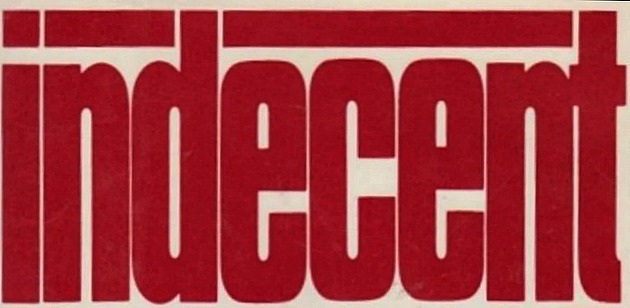Two and three-quarter years ago I posted one of my “Jesus, things really suck out there” pieces. It was titled “Definitive Saga of The Destruction of Theatrical Experience Still Required,” and the idea was that the next great Hollywood expose or tell-all could or should be called “Super-Vomit: How Hollywood Infantiles (i.e., Devotees of Comic Books and Video Games) Degraded Theatrical and All But Ruined The Greatest Modern Art Form.”
Not filmed dramas per se but the stand-alone, non-sequelized, franchise-resistant form of dramatic endeavor that used to be Hollywood’s bread-and-butter when theatres showed movies of substance (1920 to 2015). This kind of thing hasn’t completely disappeared from theatres, but it nearly has. Streaming and cable are where the goods are now, and half the time you’re talking long-form serials.
Otherwise a form of dramatic story-telling that has existed since the time of the Greeks — a tale told in one sitting, three acts delivered within 100 to 160 minutes and that’s all she wrote — is showing signs of serious theatrical erosion and may even be extinguished down the road. What does Kenneth Lonergan have to say about all this? Oh, Manchester By The Sea, how we loved ya, how we loved ya…your brevity, discipline, dramatic choices, shape.
That was then, this is now. We’ve all been living in a Covid penitentiary for roughly 11 months. It’s unlikely any of us will be paroled until sometime next fall, and perhaps not until early ’22. I’m very happy to be alive and well and writing this column and bringing in ad dough, etc., but spiritually speaking I’m the star of a downish indie flick called Each Dawn I Die.
And all I can say is “boy, would I love to be back in the old Hollywood Elsewhere misery pit of April ’18!”
Ben Fritz‘s “The Big Picture” is said to be the best intelligent summary of this evolutionary process, but I also understand it’s more of a historical analysis thing. I’d like to read a you-are-there, episode-by-episode, movie-by-movie, beat-for-beat saga of how it actually happened over the last 15 years or less. As I wrote yesterday, how the apes (“suits” and ticket buyers alike) decided that theatres are CG funhouses and that smarthouse, soul-stirring flicks are for streaming, and how the twain would never again meet.
What I’m imagining is something written in the tradition of David McClintick‘s “Indecent Exposure: A True Story of Hollywood and Wall Street,” Stephen Bach‘s “Final Cut: Dreams and Disasters in the Making of Heaven’s Gate,” or Mark Harris‘s “Pictures at a Revolution.”
Here’s that rundown I posted of the best inside-Hollywood tell-alls of all time:
Every few years I’ll post a list of the best inside-Hollywood books and then ask for titles I’ve missed. Which is what this is. What’s the next great topic for a Hollywood expose or tell-all? How about “Super-Vomit: How Hollywood Infantiles (i.e., Devotees of Comic Books and Video Games) Degraded Theatrical and All But Ruined The Greatest Modern Art Form”? Which others? An inside saga of Leonardo DiCaprio‘s pussy posse years?
(1) David McClintick‘s “Indecent Exposure: A True Story of Hollywood and Wall Street,” (2) Stephen Bach‘s “Final Cut: Dreams and Disasters in the Making of Heaven’s Gate,” (3) Mark Harris‘s “Pictures at a Revolution,” (4) Julia Phillips‘ “You’ll Never Eat Lunch in This Town Again,” (5) John Gregory Dunne‘s “The Studio,” (6) Leo Braudy‘s “The World in a Frame,” (7) Thomas Schatz‘s “The Genius of the System” and (8) Lillian Ross‘s “Picture.”

Not to mention (9) Otto Freidrich‘s “City of Nets: A Portrait of Hollywood in the 1940s“, (10) Julie Salamon‘s “The Devil’s Candy,” (11)Jack Brodsky and Nathan Weiss‘s “The Cleopatra Papers,” (12) David Thomson‘s “Suspects“, (13) “The Whole Equation and (14) “The New Biographical Dictionary of Film,” (15)William Goldman‘s “Which Lie Did I Tell?” and (16) Peter Biskind‘s “Easy Riders, Raging Bulls” and (17) “Down and Dirty Pictures.”
As well as (18) Charles Fleming‘s “High Concept: Don Simpson and the Hollywood Culture of Excess,” (19) William Goldman‘s “Adventures in the Screen Trade”, (20) the audio version of Robert Evans‘ “The Kid Stays in the Picture”, (21) Christine Vachon‘s “Shooting to Kill” and (22) “A Killer Life“, (23) James B. Stewart‘s “Disney War“, (24) Peter Biskind‘s “Seeing is Believing,” Richard Corliss‘ “Talking Pictures: Screenwriters in the American Cinema,” (25) Thomas Doherty‘s “Hollywood’s Censor” (the book about Joe Breen), (26) Jake Ebert and Terry Illiot‘s “My Indecision Is Final,” (27) Stephen Farber and Marc Green‘s “Outrageous Conduct” (John Landis and the Twilight Zone tragedy), (28) Nancy Griffin and Kim Masters‘ “Hit and Run: How Jon Peters and Peter Guber Took Sony for a Ride in Hollywood“, (29) Bruce Wagner‘s “Force Majeure“, and (30) David Thomson‘s “Warren Beatty and Desert Eyes: A Life and a Story“.
I didn’t mention Nathaniel West‘s “The Day of the Locust” as that would have pushed the total to 31.









